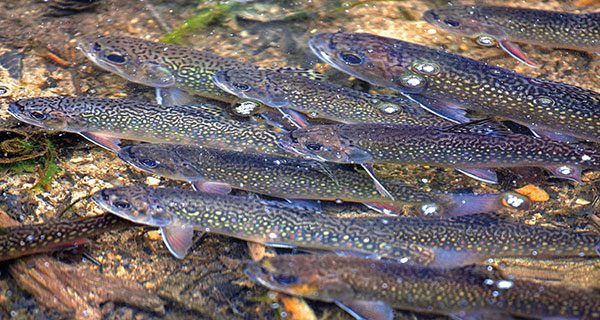
It was around 35 years ago when I first learned of Lee Wulff’s famous quote, in which he declared, “Game fish are too valuable to be caught only once.” As an avid trout and bass fisherman, I readily embraced the common perception that Wulff’s declaration, made back in the 1930s, marked the birth of catch and release, a practice we now take for granted and know actually started long before he said what he said. But it’s not the origin or history of that practice that I’ve been pondering lately—it’s the conception, which Lee Wulff strongly advocated for, that living fish (especially wild fish) have extraordinary value.
By “valuable,” I believe Wulff was referring to a few of things, not the least of which was the value in gifting a beautiful live fish to another angler by carefully and quickly releasing it to be caught again. He also understood the potential economic impact of that act, whereby maintaining larger populations of fish in popular fisheries meant more opportunities for more fishers. More fishers meant more stimulus to local economies, to tackle and gear companies, to the travel industry, etc.
Certainly, the value of wild fish became more apparent to me personally as I spent more and more time learning about and pursuing them in their wild, beautiful habitats—hence, one of the other main contributors to said value: where fish live. Golf courses are pretty. Beaches and parks are nice. But a high, wild, mountain trout stream is most often next-level, drop-dead stunning, by just about anybody’s standards.
When I first got into wild trout fishing, long before I half-way figured out what I was doing angling-wise, I found myself constantly daydreaming about various remote headwater streams in the Blue Ridge backcountry. The primeval lure of those places was powerful—greater even than the pull of fishing in them. To this day, I’m often highly distracted from my fishing by the very place where I came to fish. I learned early on that great Southern Mountain fishing memories don’t even have to have great fish in them.
Another contributor to the high value of wild fish is the therapeutic factor, which is, of course, related to the aforementioned scenic habitat factor. All that really needs to be said here is that you can spend an hour and a couple hundred bucks, every week, with a stranger in a dim room, or you can walk straight into paradise on Earth and spend a glorious mountain morning with other living beings who won’t even ask your name. They will just sing and watch as you meditate your way through that realm of cool, diamond-clear creation.
Finally, and in my view most importantly, there is what we call “the natural connection factor” in assessing the value of wild fish. Spending time in the places where wild fish exist inspires us to want to protect those places. Sometimes we become strongly connected to them emotionally, even spiritually, to the extent we become advocates for preserving other such places. Ultimately then, the value of wild fish grows to enhance the value of wild Earth.
It is more important than ever that we remind ourselves and each other that we are all connected to the same natural world, and therefore, to each other. How we play our parts in that world matters greatly to all the other parts. The value we place on the fish we pursue, for all the reasons stated, matters greatly. My true hope for this new year is that many more of us will come to know and embrace the fact that, in so many ways, it isn’t just about the fishing—it’s about the living.
David Arthur Ramsey is an outdoor photographer, writer and conservationist, born and raised in the mountains of northeastern Tennessee. His outdoor writing and photography have been published locally, regionally and nationally and are most often associated with work to preserve and protect threatened lands and waters throughout the Southern Appalachian Mountains. Field and Stream Magazine and Toyota Motor Company named David the National Hero of Conservation in 2011 for his leadership in saving the 10,000-acre Rocky Fork watershed in northeastern Tennessee. His newly published book, Rocky Fork: Hidden Jewel of the Blue Ridge Wild, tells the story, through his rich photography and his first-hand account, of the more than decade-long battle to preserve this Appalachian and American treasure.